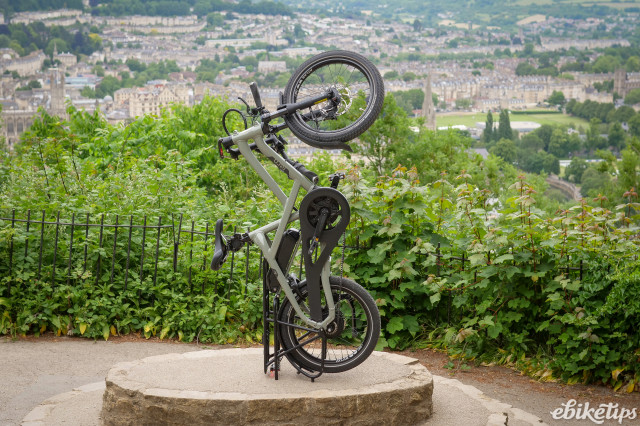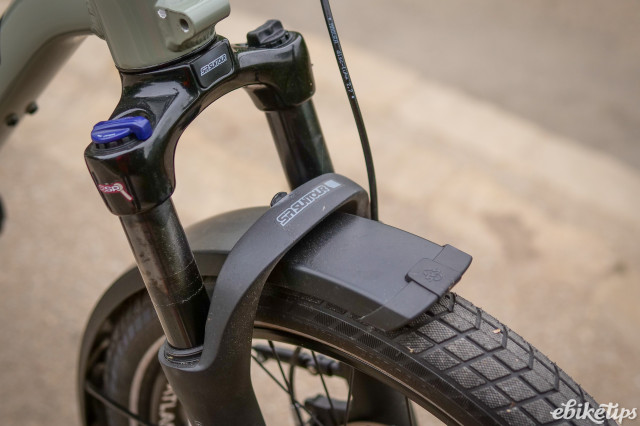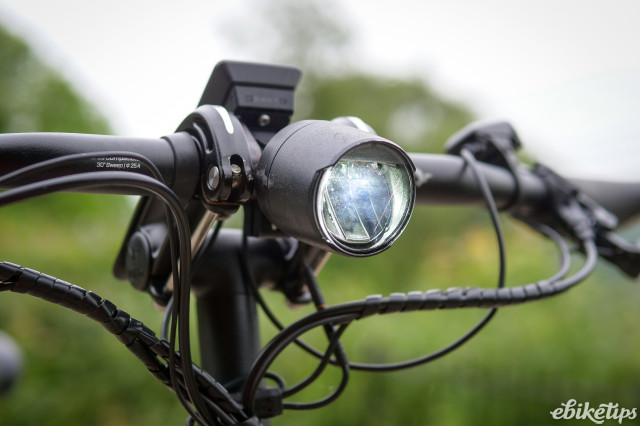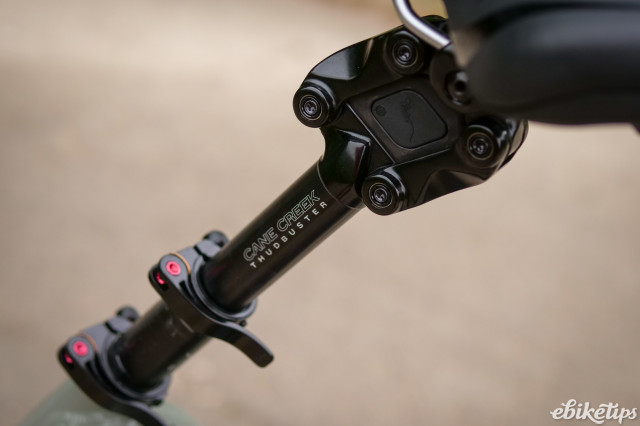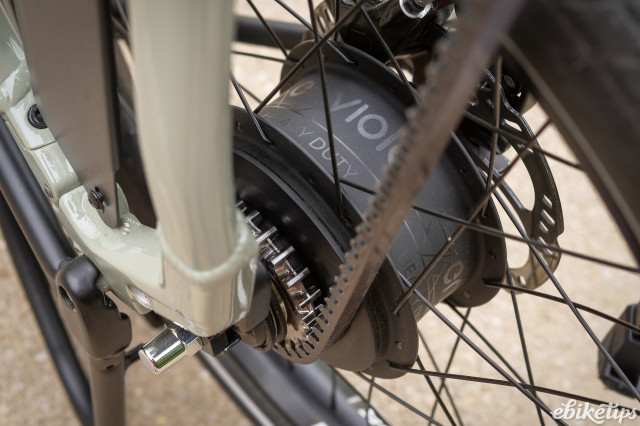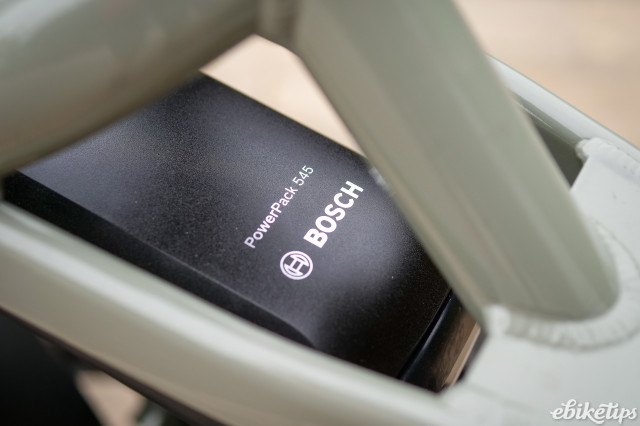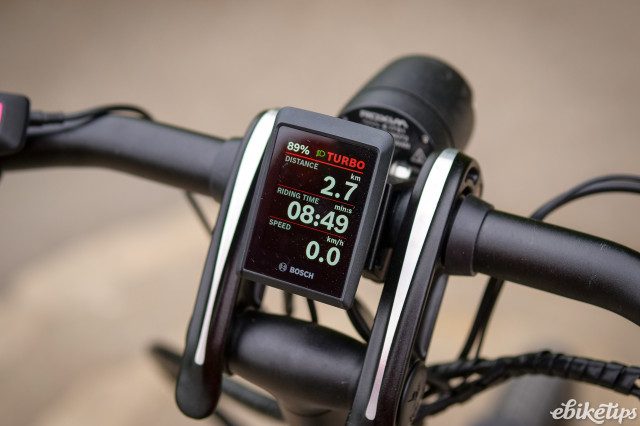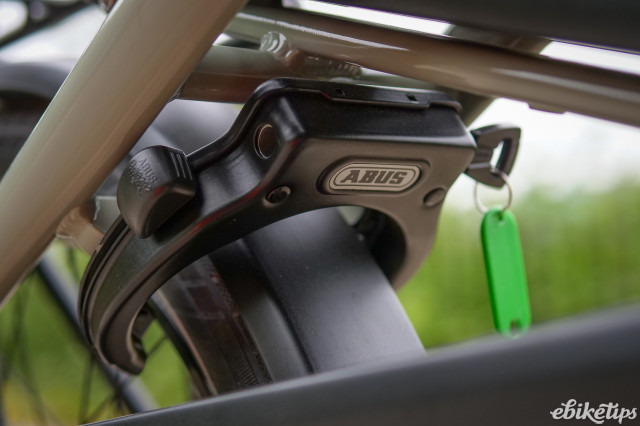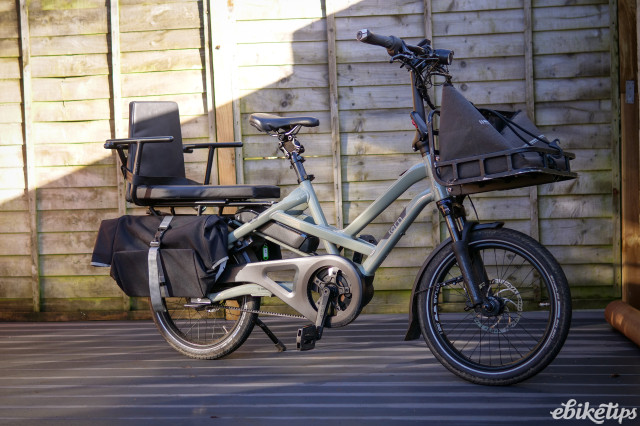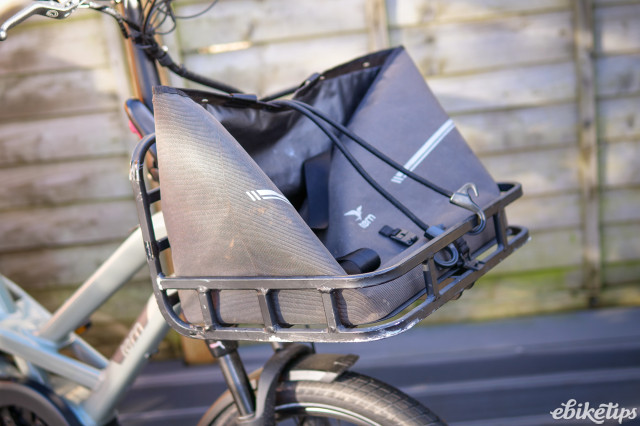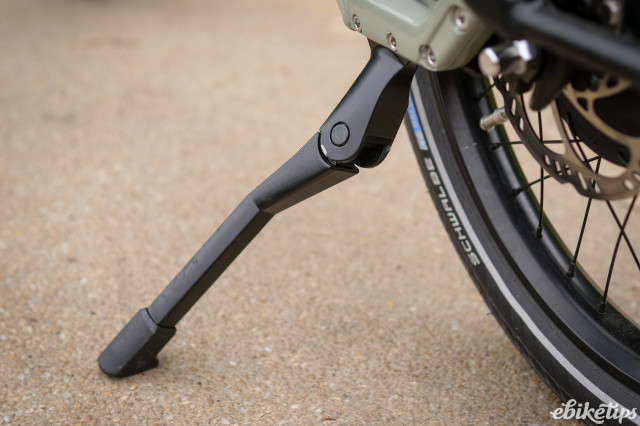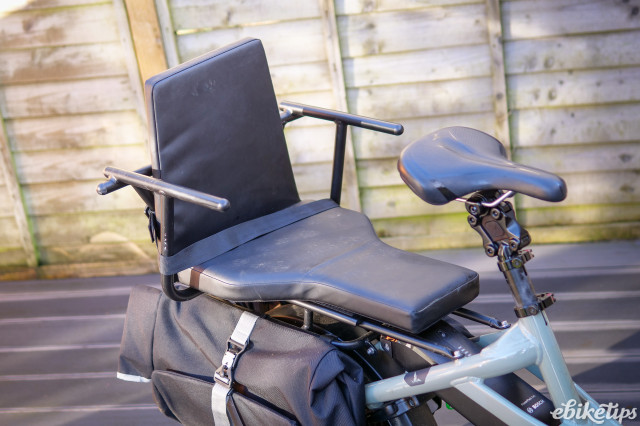Tern HSD S00
Overview
- Great build quality
- Excellent motor
- Huge range of accessories
- Single kickstand not up to the job
- Hub hard to shift under load
Tern’s second-generation HSD is a chunkier and more cargoey (is that a word?) bike than its predecessor that can carry a lot of stuff but still feels like a standard city bike most of the time. It’s almost endlessly configurable with a huge range of accessories and has a great motor system. For a lot of people, it’ll be all the cargo bike they need.
A quick history lesson first, because it’s quite relevant to this new bike. Tern released the longtail, adult-plus-two-kids GSD in 2017 and it was an instant hit. That bike is now on its second incarnation and remains probably my favourite e-bike ever. The HSD was released a couple of years later to sit under it in the range: a slimmed down cargo/city bike that could still carry plenty of stuff but was smaller, lighter and a bit cheaper.
Then came the Quick Haul, a bike that could do a lot of the things that the original HSD did, and at a much lower price point. At that point the original HSD felt a bit redundant. So, what to do? The answer was to beef up the HSD.
The frame has had an overhaul to make it more like its GSD bigger brother, and the rear rack has been significantly uprated to a maximum carrying capacity of 80kg (from 60kg), meaning you can put a reasonably-sized adult on the back, or shift a lot of stuff. The tweaks to the HSD mean that the Tern range makes a bit more sense now: the gaps between the GSD and HSD, and HSD and Quick Haul, are more even.
The HSD is available in three different builds. The cheapest build, the P10 (£4,100) has a 10-speed Shimano derailleur drivetrain, and the P5i (£4,400) gets a 5-speed Shimano hub gear and a Gates Carbon belt drive. The top-spec S00 (£5,200) I’m reviewing here uses Enviolo’s heavy duty continuously-variable hub, and sports a number of other upgrades. All of the three bikes use the same Bosch Performance Line motor with a 545Wh Power Pack, with the S00 scoring an upgrade to the Kiox computer over the Intuvia 100 used on the other two builds.
Living with the Tern HSD
Like all of Tern’s e-cargo range the HSD is built around a low-stepover frame and 20” wheels, with the load area behind the rider. The small wheels make the bike very compact: even the GSD, the biggest bike in the range, is no longer or wider than a standard 700c-wheeled city bike, and the HSD is a bit shorter than that.
For the most part, when you’re riding the HSD it doesn’t feel like a cargo bike. It’s not a light bike but it’s fairly agile in its handling, and doesn’t feel long or cumbersome. With the minimum of accessories onboard – say just a set of Tern’s excellent Cargo Hold 37 panniers – it’s a great day-to-day city bike that’s well-equipped and comfortable.
At the front there’s a pretty effective short-travel SR Suntour suspension fork to take the sting out of potholes, and the S00 build also gets a Cane Creek Thudbuster seatpost for a bit of cush at the rear. Add a generously padded saddle and some excellent Schwalbe Big Ben tyres and you’ve got a really comfy bike for the shorter trips that a bike like this will spend most of its life doing. You can go longer – I’ve been to Bristol and back on this bike, a round trip of 40km, with no issues – but the saddle and ride position are more designed for shorter trips than that.
Full mudguards and chain cover mean the HSD is year-round-ready as standard, and the S00 gets a really excellent lighting system: a 700-lumen front light with selectable high/low beam, and a rear light with a braking function. The brake light works even when the lights aren’t on, which is a nice touch, although I generally keep the lights on anyway.
Tern says that the HSD will fit riders from 150cm up to 195cm. I’m near the top of that range and I’ve never found the bike to be uncomfortable; the riding position for me is fairly compact and upright but it works just fine. Smaller riders who have used the bike during testing have all been happy too. The telescopic seatpost and simple-to-adjust Andros stem mean that playing with the ride position is simple, and it’s easy to swap between riders, with no tools needed.
The Bosch Performance Line motor used on the HSD range is a fantastic city unit and easy to recommend. You get up to 75Nm of torque assisting you through the cranks, and that’s enough to make pretty much anything a breeze. On my benchmark commute hill (1.5km at 5%, with a 12% section) things never got difficult with the bike free of cargo. One of the things that the Kiox display allows you to do is see the power you’re supplying from your legs, as opposed to the motor; even on the steepest bit of the climb that wasn’t much over 100W, which for me is barely trying.
Once you start to load up the bike with a heavy grocery shop, or maybe a child in a seat, you’re going to start to notice that the motor doesn’t quite have the grunt of Bosch’s top-end models. Certainly my Tern GSD is a bit more snappy up the climb, even though it’s heavier. Partly that’s down to the extra 10Nm of torque that its Cargo Line motor can supply, and partly it’s down to the transmission.
The GSD has a derailleur transmission while this HSD S00 uses Enviolo’s continuously-variable hub, which is not as efficient as a derailleur transmission or a geared hub gear. The Performance Line motor may not match the higher-torque units for all-out performance, but the plus side is that it’s whisper-quiet, and that makes the HSD a very relaxing bike to be aboard, especially when you leave the hustle and bustle of the city.
Let’s dive into the hub a bit more. I’ve used the Enviolo system on a number of bikes, and I can see the benefits: it’s a very well-engineered bit of kit, it has a good range from low to high gear, you can use it with a belt drive, the controls are simple and you can shift it when stationary for a quick getaway at the lights. It’s not without its issues though. The efficiency we’ve already mentioned, but the thing that I like least about the system is the way that it resists shifting when under load.
This means that changing at the lights at a standstill is fine, but when you’re on a steep hill and need to shift down it’s very hard to do so unless you come off the power, which robs you of speed. The fact that it’s continuously variable is a talking point, but in reality it’s not a benefit: any change of ratio you make is going to be equivalent to swapping gears on a hub gear or derailleur system. It’s not like you need to make an adjustment smaller than that.
Back to the motor system: Tern has specced the HSD with the 545Wh PowerPack battery which will give plenty of range for nearly any use case that this bike is likely to find itself thrown at. I’ve done the 40km (mostly flat) round trip to Bristol without getting close to the battery’s limit, and on my 9km commute round trip that’s essentially down a big hill to work and back up it to get home, I can do four days on the HSD before it needs charging - sometimes only three if it’s really cold.
You won’t get the 121km that Tern claims is the possible range, but you’ll get plenty. If you think you might struggle for range then swapping out the battery for the larger 725Wh unit is an option, but there’s no second battery mount here like there is on the GSD.
The Kiox setup has both a five-bar indicator on the remote and a percentage on the display itself. The five-bar indicator on the remote, is, I would say, badly implemented. It’s in blue LEDs, which also turn white to indicate half-steps, meaning what you see changes at 10% increments. That is, until you get to 30% battery. Then the remaining bars go orange with no halfway colour. So basically you lose the extra granularity at the exact point where you begin to need it. That’s just daft.
The rest of the remote is very good: the mode buttons are easy to find and you can flip between screens on the Kiox with the left and right cursors. There are a lot of screens as standard on the Kiox, and you can customise them to your taste.
The percentage display is really useful: on my GSD’s Purion display, two bars of battery could mean 39% – enough to get me home – or 21%, which would likely mean running out of battery on the steepest bit of the climb and arriving home a sweaty, blubbering mess. Having a percentage to look at means it’s much easier to judge, and adjust the mode accordingly, if you’re getting low.
Tern has helpfully added a charge port in the top tube for the new model which means you don’t have to scrabble around in the battery mount. It’s surprising how much of a difference this makes. If you want to remove the battery – say to charge it inside if it’s really cold, or to bring it into work to steal company electricity – then it’s simple enough, although it gets harder as you add stuff to the top of the rack.
The same key that releases the battery also works the frame lock, which is super useful if you’re just popping into a shop. On the HSD, it’s on the rear wheel too, which is more secure: it’s much harder to wheel a heavy bike away on the front wheel than the rear.
Bosch’s Smart System allows you to pair your bike with a smartphone and Bosch’s eBike Flow app for extra functionality. On the Kiox display you can navigate from your phone, which can be helpful if you’re on a longer trip, and you can also tweak the assistance modes to your taste.
There’s a lock function, too, but that requires your phone to be with your bike at all times which means you can’t easily share a bike, or lend it to a friend. It’s not especially well thought out, to be honest - especially for a bike like the HSD which is designed to accommodate a wide range of riders and is perfect for a family to share. It’s a bit “old man yells at cloud,” I know, but I don’t really feel like the Smart System adds a lot to a bike like this. I’ve been swapping between the HSD and the GSD with its basic Purion display during testing and the only thing I actually miss is knowing the exact state of the battery.
Tern HSD: carrying all the stuff
You could just use the HSD as a city bike and limit your carrying to your sandwiches and work shirt, but that’s kind of missing the point of a bike like this. There is a huge range of accessories available to carry shopping, bulky stuff, kids, adults… even dogs. What you choose will depend very much on your individual use case, but here’s how I’ve had the HSD set up:
First off, the Cargo Hold 37 panniers are a complete no-brainer and nearly everyone should get a pair with the bike. They’re not as big as the GSD’s panniers but they’re the same design, with a waterproof roll-top that can be folded in to create a big bucket bag you can lob anything you like in. Each one will swallow a standard bag-for-life-sized shopping bag easily, and I’ve paired those two bags with a Transporteur rack at the front and a Weathertop bag which adds another 45l of capacity.
I’m well-practised in popping down to Lidl and doing the weekly shop on the GSD, and on this HSD I have marginally less space, but realistically I never fill up the bigger panniers and these smaller ones are perfect. The HSD will carry a £100+ supermarket shop easily, and transporting it home is simple enough: the bike feels well-balanced even when loaded up.
The single-sided kickstand isn’t up to the job though: if you buy this bike and you’re planning to carry anything, especially kids, you might as well add on the cost of a proper double kickstand straight away. It should really come with one as standard.
As you can see, I’ve also got a Captain’s Chair on the back, and footrests that screw into the adjustable dropouts at the rear. My kids are getting a bit big for the HSD now but I put my son on the back to see if it could cope with his 80kg mass and 1.98m(!) height. And it could, just about.
Realistically you’re not going to put anyone that big on the back of this bike but it’s fine for school-age children. Younger kids can go in the Clubhouse Mini or Storm Box Mini, which offer a bit more protection, or you can fit a child seat for tots. Dogs can go in the dog basket. The full list of accessories is extensive, and you should be able to find something to suit your needs.
Tern HSD: Value and overall
You’re well into the “You could buy a car for that” realms with the top-spec S00 build that I’ve been testing - and the others, to be fair. It wouldn’t be a good car, though, and with average insurance prices hitting £1k for the first time and fuel prices staying high, it’s getting increasingly expensive to run a car. Realistically a lot of people in the UK can’t do without a car for all kinds of reasons, but if you can – or you can do away with a second car – and run a bike like this instead, it won’t take you long to save a ton of money.
And this bike can do a lot of things: take a child to school, lug home the weekly shop for a family of four, deal with a year-round city commute, serve as a general runaround for local trips… the list goes on. Running costs on a bike like this are minimal. It costs pence to charge, the high quality kit on it will last for a long time and the Bosch motor is one of the most reliable out there.
If you have to cart two kids around then the Tern GSD is still the bike I’d recommend if your budget will stretch to it. For anyone else that’s looking to just have a general purpose utility bike that can carry one passenger or a ton of stuff, the HSD is going to be a better and slightly cheaper option for many people, and that makes it easy to recommend.
There are things I really like about the S00 build that I tested: the lighting system is excellent, and I really like the Kiox display. If it was my own money, though, it wouldn’t be the build I’d buy: I don’t think the upgrades are worth the price hike on a city bike like this and my choice would probably be the P5i, which still gets the maintenance-free belt drive but with a simpler hub and slightly less Gucci build, for £800 less. Put some of that towards a proper kickstand and your choice of accessories and you’re still quids in over the top spec build.





































